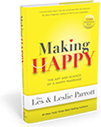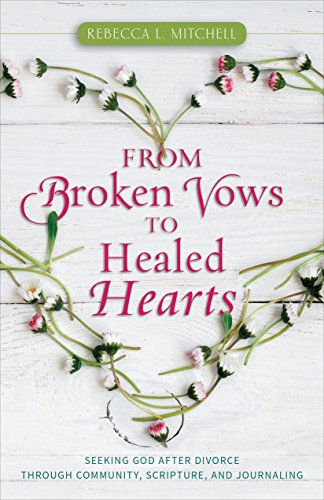I call the last three years of my marriage the dark years, as I struggled simply to function amid the chaos and turmoil that had entered my home. Our covenant had been broken, and despite sincere prayer and effort, our marriage was not restored. I was shocked and devastated. My best friend, the father of my children, the person I had expected to grow old with, had moved on. Shortly after our twenty-fifth wedding anniversary, which we did not celebrate, I finally faced the reality of the demise of our marriage, and we separated. We were legally divorced in November 2014.
The dark years, without question, were the most difficult of my life — the details of which I am intentionally omitting for the sake of privacy. I have discovered the fruitlessness of rehashing the past; it only derails me from my journey toward healing. When I instead reflect on the past, I see evidence that God is good and has walked through this dark valley with me, providing comfort through His unconditional love, faithfulness, and strength. I have been brokenhearted, but I am mending with help from God’s healing love, supportive family, and wonderful friends.
Looking back, I can see my progression— and sometimes regression—through the following stages:
Stage 1: I can’t believe this is happening to me!
Stage 2: I’m so angry I could _______________!
Stage 3: When will this pain ever go away?
Stage 4: I don’t feel good, but I do feel better.
Stage 5: I have a new life, and I can find joy in it.
Much of my personal journey has been a battle to emerge from the pain stage to experience true and lasting healing.
I wanted to stop talking about what happened to me. I wanted to focus on growth, identity, and a new hope for the future.
[God bestows] on them a crown of beauty instead of ashes. (Isa. 61:3)
A rock hit my windshield. I didn’t repair it right away, and what was once a circular chip smaller than a dime is now an L-shape crack twelve inches long. Although my passengers might stare at the eye-level flaw in irritation, I ignore it, waiting for my next financial windfall to pay for the repair. It’s been over a year. Besides, I think my Toyota will never be quite the same once I break that factory seal.
Often when something breaks, if it’s not too expensive, we simply throw it away. If it is repairable, we may make the effort to fix it, expecting it will still be useful but never quite the same. We make do with the repaired item, perhaps hiding its flaws, until we can afford to replace it.
The art of kintsugi deal with brokenness differently.
Kintsugi is the Japanese art of mending broken pottery. Resin is mixed with gold dust and then applied to the broken pottery to hold the pieces together. What was once a ruined vase, a pile of broken pieces, is restored with veins of gold and becomes a stunning work of art. The breakage is not ignored or hidden—it is illuminated and accentuated. The restoration and subsequent repair of the pottery becomes part of the history of the piece, which enhances rather than diminished its usefulness and beauty.
We feel broken, even shattered, after the loss of a marriage. We see ourselves as failures— rejected, lost, and hopeless. Even if our open wounds have healed, we hardly think of scars from the wounds as veins of gold that makes us more useful and beautiful than before. But that is exactly how God sees us and how we can come to see ourselves. God is a patient kintsugi artist, who mends broken pieces into masterpieces and turns our shame into radiance. We become a visual representation of God’s restorative power. As we heal, we gain a deeper understanding of who He is, how great His love for us is, and how we can help others experience His love.
Yes, we look different. Being broken was not part of the original plan. But God can heal and restore to us an abundant, joy-filled life as we walk closely with Him. Click To TweetWhat could be more beautiful?
Excerpted from From Broken Vows to Healed Hearts by Rebecca Mitchell (Kregel Publications) © 2018








